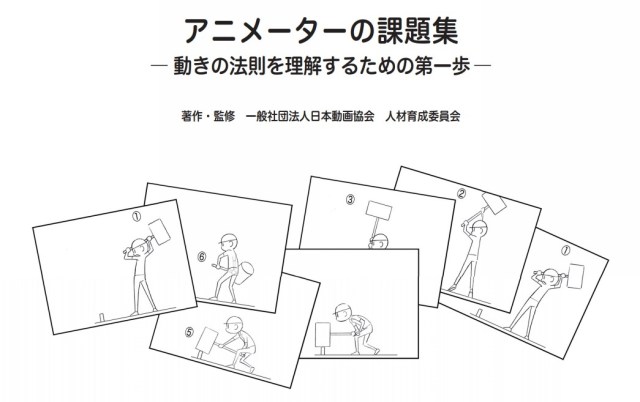
Animator Assignment Collection covers “First Steps Towards understanding the Principles of Motion.”
“Modern animation is all done with CG, right?” isn’t an uncommon assumption, and it is true that computers are playing an increasingly large role in animation production. However, the Association of Japanese Animations (AJA) wants aspiring anime artist to avoid becoming entirely reliant on machines when creating art.
“In recent years, the number of anime in which CG models are used for characters is increasing, but hand-drawn art is still an important part of many productions. The job of animator is to provide artwork that meets the needs of the project. Animators, professionals of motion, have a vital occupation,” says the association, and in keeping with that belief, it’s recently released a series of animator art drills that it calls the Animator Assignment Collection.
Subtitled as “The First Steps Towards Understanding the Principles of Motion,” the assignment collection is offered as a free PDF download from the AJA on its website here, and divides its drills into four sections: Form, Physics, Movement, and Application. The drills, developed and selected by veteran animator/animation director Kazushige Yusa (whose credits include anime movies in the Touch and Street Fighter II franchises) with the backing of studios such as Sunrise, Bones, Studio 4°C, and Tezuka Productions, are accompanied by example solutions and explanations.
Many of the drills give you two pieces of artwork and ask you to draw in a number of intermediary steps, which would correspond to either in-between or key animation frames. The Assignment Collection also encourages artists to keep in mind what sort of action or mood the scene is trying to create. For example, this driving drill asks for two different in-between frames, one showing the car being driven at a slow and safe pace, and another for if the driver is speeding along at a faster rate towards an urgent destination.
It’s not just the item in motion that artists are instructed to consider, either. Here, for instance, the drill is to draw this credit card being tipped over as it’s tipped over by the mouse and reaches a 45-degree angle, while accounting for how much the bottom edge of the card should slide or sink depending on how hard or soft the surface is.
Then there’s this drill, which asks you to add the necessary frames so that this man can swing the hammer in a continuous loop. But while frame one shows the hammer raised and frame four shows it hitting the target, the drill doesn’t just want you to draw frames 3 and 4, but five and six as well, since the posing and hand placement should be different between when a person is swinging a hammer down and when they’re lifting it back up.
▼ In total, the 123-page assignment collection covers 14 drills.
The ability to think out these sequences in their own heads is arguably of especially great importance to artists working in the anime industry. Historically, Japan’s animation studios haven’t had the sort of budgets that allow them to chase the nearly live-action-film-smoothness of, say, a Disney film. However, anime has achieved worldwide popularity in large part due to its artists ability to create dynamic movement even with a limited number of frames to work with, and so the ability to create stylized, emotionally expressive animation outside of what a CG modeling program dictates.
Source: Association of Japanese Animations via IT Media
Images: Association of Japanese Animations
● Want to hear about SoraNews24’s latest articles as soon as they’re published? Follow us on Facebook and Twitter!

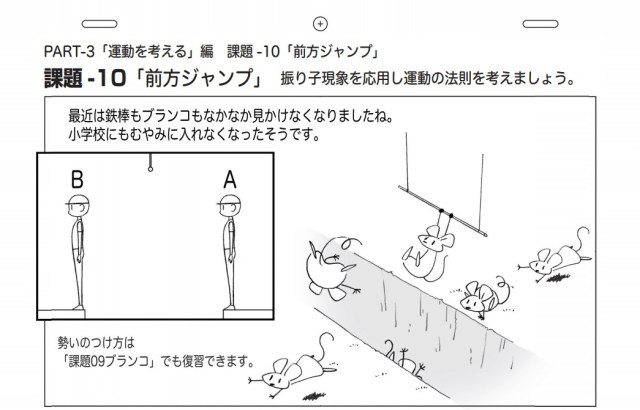
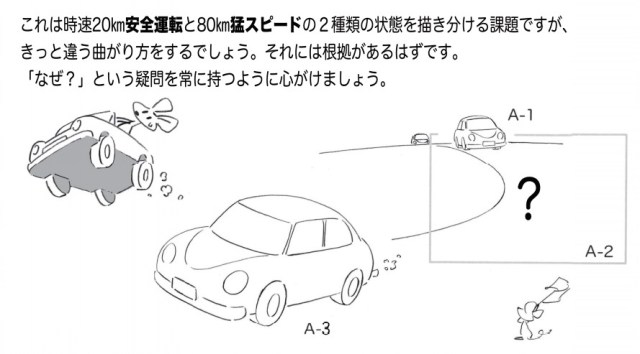
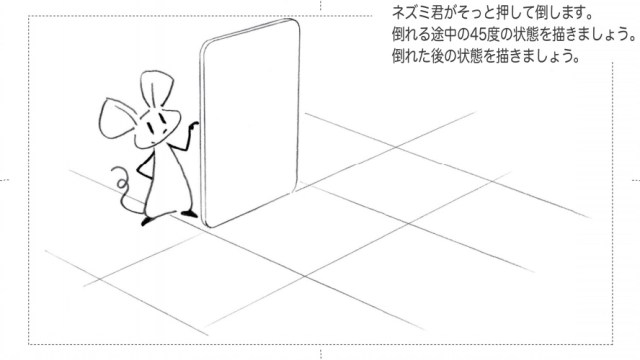
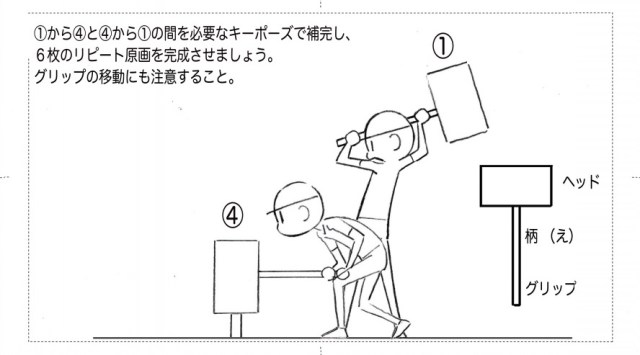
 Here’s the military exercise that has North Korea freaking out
Here’s the military exercise that has North Korea freaking out Puzzling, ludicrously hard Touei Animation employment test proves animators deserve a raise
Puzzling, ludicrously hard Touei Animation employment test proves animators deserve a raise Several Tokyo train lines were momentarily shut down today in honor of Tohoku Earthquake victims
Several Tokyo train lines were momentarily shut down today in honor of Tohoku Earthquake victims Ghibli director Hayao Miyazaki shares secret to help improve your anime art skills
Ghibli director Hayao Miyazaki shares secret to help improve your anime art skills Japan makes card game to help kids raise disaster prevention awareness
Japan makes card game to help kids raise disaster prevention awareness Foreigner’s request for help in Tokyo makes us sad for the state of society
Foreigner’s request for help in Tokyo makes us sad for the state of society Red light district sushi restaurant in Tokyo shows us just how wrong we were about it
Red light district sushi restaurant in Tokyo shows us just how wrong we were about it Japanese city loses residents’ personal data, which was on paper being transported on a windy day
Japanese city loses residents’ personal data, which was on paper being transported on a windy day Ghibli Park now selling “Grilled Frogs” from food cart in Valley of Witches
Ghibli Park now selling “Grilled Frogs” from food cart in Valley of Witches Historical figures get manga makeovers from artists of Spy x Family, My Hero Academia and more
Historical figures get manga makeovers from artists of Spy x Family, My Hero Academia and more Pokémon Sleep camping suite and guestrooms coming to Tokyo Hyatt along with giant Snorlax burgers
Pokémon Sleep camping suite and guestrooms coming to Tokyo Hyatt along with giant Snorlax burgers Beautiful Ghibli sealing wax kits let you create accessories and elegant letter decorations【Pics】
Beautiful Ghibli sealing wax kits let you create accessories and elegant letter decorations【Pics】 Akihabara pop-up shop sells goods made by Japanese prison inmates
Akihabara pop-up shop sells goods made by Japanese prison inmates French Fries Bread in Tokyo’s Shibuya becomes a hit on social media
French Fries Bread in Tokyo’s Shibuya becomes a hit on social media Sandwiches fit for a sumo served up in Osaka【Taste Test】
Sandwiches fit for a sumo served up in Osaka【Taste Test】 McDonald’s new Happy Meals offer up cute and practical Sanrio lifestyle goods
McDonald’s new Happy Meals offer up cute and practical Sanrio lifestyle goods Japanese ramen restaurants under pressure from new yen banknotes
Japanese ramen restaurants under pressure from new yen banknotes All-you-can-drink Starbucks and amazing views part of Tokyo’s new 170 meter-high sky lounge
All-you-can-drink Starbucks and amazing views part of Tokyo’s new 170 meter-high sky lounge Studio Ghibli releases new action figures featuring Nausicaä of the Valley of the Wind characters
Studio Ghibli releases new action figures featuring Nausicaä of the Valley of the Wind characters New private rooms on Tokaido Shinkansen change the way we travel from Tokyo to Kyoto
New private rooms on Tokaido Shinkansen change the way we travel from Tokyo to Kyoto Studio Ghibli glasses cases let anime characters keep an eye on your spectacles
Studio Ghibli glasses cases let anime characters keep an eye on your spectacles Tokyo Tsukiji fish market site to be redeveloped with 50,000-seat stadium, hotel, shopping center
Tokyo Tsukiji fish market site to be redeveloped with 50,000-seat stadium, hotel, shopping center Studio Ghibli releases Kiki’s Delivery Service chocolate cake pouches in Japan
Studio Ghibli releases Kiki’s Delivery Service chocolate cake pouches in Japan New definition of “Japanese whiskey” goes into effect to prevent fakes from fooling overseas buyers
New definition of “Japanese whiskey” goes into effect to prevent fakes from fooling overseas buyers Our Japanese reporter visits Costco in the U.S., finds super American and very Japanese things
Our Japanese reporter visits Costco in the U.S., finds super American and very Japanese things Studio Ghibli unveils Mother’s Day gift set that captures the love in My Neighbour Totoro
Studio Ghibli unveils Mother’s Day gift set that captures the love in My Neighbour Totoro New Japanese KitKat flavour stars Sanrio characters, including Hello Kitty
New Japanese KitKat flavour stars Sanrio characters, including Hello Kitty More foreign tourists than ever before in history visited Japan last month
More foreign tourists than ever before in history visited Japan last month New Pokémon cakes let you eat your way through Pikachu and all the Eevee evolutions
New Pokémon cakes let you eat your way through Pikachu and all the Eevee evolutions Sales of Japan’s most convenient train ticket/shopping payment cards suspended indefinitely
Sales of Japan’s most convenient train ticket/shopping payment cards suspended indefinitely Sold-out Studio Ghibli desktop humidifiers are back so Totoro can help you through the dry season
Sold-out Studio Ghibli desktop humidifiers are back so Totoro can help you through the dry season Japanese government to make first change to romanization spelling rules since the 1950s
Japanese government to make first change to romanization spelling rules since the 1950s Ghibli founders Toshio Suzuki and Hayao Miyazaki contribute to Japanese whisky Totoro label design
Ghibli founders Toshio Suzuki and Hayao Miyazaki contribute to Japanese whisky Totoro label design Doraemon found buried at sea as scene from 1993 anime becomes real life【Photos】
Doraemon found buried at sea as scene from 1993 anime becomes real life【Photos】 Tokyo’s most famous Starbucks is closed
Tokyo’s most famous Starbucks is closed One Piece characters’ nationalities revealed, but fans have mixed opinions
One Piece characters’ nationalities revealed, but fans have mixed opinions We asked a Uniqlo employee what four things we should buy and their suggestions didn’t disappoint
We asked a Uniqlo employee what four things we should buy and their suggestions didn’t disappoint Princesses, fruits, and blacksmiths: Study reveals the 30 most unusual family names in Japan
Princesses, fruits, and blacksmiths: Study reveals the 30 most unusual family names in Japan Kid creates amazing animated homage to Tokyo Ghoul anime…on a Nintendo 3DS!【Video】
Kid creates amazing animated homage to Tokyo Ghoul anime…on a Nintendo 3DS!【Video】 Talented Thai artist provides peek inside the secret world of miniature people【Photos】
Talented Thai artist provides peek inside the secret world of miniature people【Photos】 New Godzilla has super-thick thighs thanks to Studio Ghibli anime veteran
New Godzilla has super-thick thighs thanks to Studio Ghibli anime veteran New Sailor Moon art collection is gorgeous, could (but won’t) be used to send mail
New Sailor Moon art collection is gorgeous, could (but won’t) be used to send mail “I didn’t ask the old men for any advice” says director of Studio Ghibli’s first CG anime
“I didn’t ask the old men for any advice” says director of Studio Ghibli’s first CG anime Amazing Lego artist spends six months bringing Hatsune Miku into the physical world
Amazing Lego artist spends six months bringing Hatsune Miku into the physical world Japan’s sweet and stylish Pokémon glasses are the best reason to ditch your contact lenses
Japan’s sweet and stylish Pokémon glasses are the best reason to ditch your contact lenses Ghibli producer provokes backlash for comment regarding abilities of women to direct anime
Ghibli producer provokes backlash for comment regarding abilities of women to direct anime New onsen facility in the heart of Tokyo’s business district to be ready for Olympics
New onsen facility in the heart of Tokyo’s business district to be ready for Olympics Artist makes cool Gundam, tanks, and rifles out of Amazon boxes to show they’re all secretly cute
Artist makes cool Gundam, tanks, and rifles out of Amazon boxes to show they’re all secretly cute Veteran animator claims working on Pokémon anime pays less than working in a convenience store
Veteran animator claims working on Pokémon anime pays less than working in a convenience store Studio Ghibli helped create final Evangelion movie, since no one else had the right machine【Vid】
Studio Ghibli helped create final Evangelion movie, since no one else had the right machine【Vid】 Chinese sand artist tickles the heartstrings of manga fans with stunning sand manga drawings 【Videos】
Chinese sand artist tickles the heartstrings of manga fans with stunning sand manga drawings 【Videos】 Who needs anime? One-Punch Man scene moves better in still-frame manga than TV adaptation 【Video】
Who needs anime? One-Punch Man scene moves better in still-frame manga than TV adaptation 【Video】
Leave a Reply